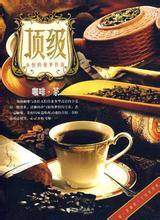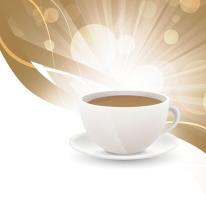Introduction to the flavor and taste of Hassanda Coffee Garden, which can be made into high-quality mixed coffee.
After entering Ecuador from Colombia, the Andes is divided into the eastern and western Cordillera mountains, with a high plateau in the north and a low plateau in the south, with an average elevation of between 2500 meters and 3000 meters. The Andes run through the middle of the border. The ridges crisscross, dividing the plateau into more than ten intermountain basins. The most important are the Quito basin and the Cuenca basin in the south. There are many volcanoes and frequent earthquakes in the territory. The famous Kotopaxi volcano, 5897 meters above sea level, is one of the highest active volcanoes in the world. Chimborazo Mountain in central Ecuador, 6262 meters above sea level, is the highest peak in Ecuador, Mount Chimborazo in Ecuador. It is 6384.1 kilometers from the center of the earth to the top of the mountain. Mount Chimborazo, located in the West Cordillera in the Andes, has long been mistaken for the highest peak in the Andes. It is a dormant volcano with many craters and glaciers at the top of the mountain, which is more than 4694 meters. Port Guayaquil is the largest seaport in Ecuador. It faces the Pacific Ocean and backs against Mount Santa Ana. The nearby island of Pune serves as a natural barrier to protect the harbour from storms. There is a wharf in the south, which is more than 900 meters long. Ships from different parts of the world flying various flags are moored in the harbor. The port railway leads to the capital Quito, and highways connect Quito with other cities in the country. Bananas, cocoa, coffee, cotton and other products from all over the country are collected and distributed here. Guayaquil has also played an important role in the history of friendly exchanges between the peoples of China and Ecuador. As early as the 18th century, Chinese clothing, textiles and other goods were shipped to Ecuadorian cities through Guayaquil. In August 1978, the Chinese cargo ship Jialing River arrived here for the first time. Most of the import and export goods of the two countries are also transported through Guayaquil and Ecuador implements the presidential system. On 26 November 2006, Correa, a candidate of the Sovereign Motherland Movement, was elected president in the second round of presidential elections and took office on 15 January 2007. Immediately after taking office, Coe promoted the convening of the Constituent Assembly. On April 15, 2007, Eritrea decided to hold a Constituent Assembly in a referendum with an approval rate of 81.72%. In September, Eritrea held an election of representatives to the Constituent Assembly, and the ruling party, the Sovereign Motherland Union, won 61% of the seats. In July 2008, the Constituent Assembly adopted the new draft constitution. In September, the new constitution was passed in a referendum with 63.94% of the vote. In October, the new constitution was formally promulgated and implemented. In April 2009, Eritrea re-held presidential, parliamentary and local government elections in accordance with the new constitution, and Correa was re-elected president. On September 30, 2010, large-scale police protests broke out and riots broke out in major cities such as Quito, Ecuador, in protest against the adoption by the National Congress of the Public Service Act, which included provisions for cuts in police and military benefits. President Correa was attacked and was trapped for a time, then rescued with the support of the military, parliament and the international community. On May 7, 2011, Eritrea held a referendum on 10 political and social issues, including judicial reform and media control, all of which were adopted. Since 2012, the political situation in Eritrea has remained stable.
In 1535, Frey Thomas de Belanga of Spain and others stumbled upon the Galapagos Islands. Thomas was born in 1487 on the Douro River in the province of Soria, Spain, and was the fourth bishop of Panama at that time. He was ordered to go to Peru. When his ship set sail from Panama on February 23, under the impact of a strong current, they were taken to the unknown sea and discovered a small island in the Galapagos Islands on March 10. At that time, there were only two days of fresh water left on the ship, and the sailors landed in lifeboats and found a large number of seals, sea turtles, giant tortoises that could carry people, and iguanas that looked like venomous snakes, but they did not find fresh water, so they sailed to another larger island more than 20 kilometers away. As there was still no wind, it took them several days to get there, and the water ran out quickly and had to starve, including no grass for the horses on board. St. Cristobal is a larger island in the Galapagos archipelago, where there is a small lake called El.Junco 410m above sea level, where several streams flow along the rocks and volcanic rocks on the southern slope of the island. Mineral-rich fresh water moistens the land of San Cristobal, keeping the soil moist and fertile forever. It provides the most rare conditions for the growth of coffee here. As coffee is drunk by people all over the world, the world coffee industry is also moving towards a mass production model, while a coffee industry like St. Cristobal, which is small in scale and of uncertain quality, is in trouble and is likely to be forced to give up without profit. It wasn't until the early 1990s that the Gonzalez family bought Hasunda Coffee Park. The localized microclimate caused by the Humboldt current (HumboldtCurrent), strong equatorial sunlight and sharp temperature changes (43 ℃ at sea level and 10 ℃ to 16 ℃ above sea level) provided advantageous conditions that prompted the Gonzalez family to expand their coffee plantation. Through the reclamation of the early land, the Gonzalez family doubled the area of the coffee plantation. Ecuadorian Class A coffee, with a large state-run seed value garden, was produced in the natural vegetation zone of the 1300-2000 meter highland, popular in Europe and the United States, and tasted the exquisite world-class Arabica Arabica flavor at supermarket prices.
ES Coffee is a clean organic coffee grown on the slopes of the Andes in Latin America. It is 100% pure coffee, and the quality of our coffee has been guaranteed and improved by working to improve the economic and working conditions of the plantation, while maintaining the small scale of the coffee plantation and the biodiversity in the hospital. In addition, it is one of the very important economic sources of coffee origin, because it is all dried and packaged locally, which ensures that it is a very unique kind of coffee in the world! At the same time, it ensures its unique taste.

Important Notice :
前街咖啡 FrontStreet Coffee has moved to new addredd:
FrontStreet Coffee Address: 315,Donghua East Road,GuangZhou
Tel:020 38364473
- Prev

Ecuador Santa Cruz Manor Coffee with a light grassy taste Introduction to the region
Ecuador is located in South America, the equator line passes through the country, so Ecuador is also known as the equatorial country, Ecuador's superior geographical location, fertile soil and special climatic conditions for coffee cultivation in the country created a superior natural environment, Ecuador is one of the few countries in the world can produce Arabica coffee beans and Robusta coffee beans at the same time. Use of Ecuador
- Next

Introduction to the flavor and taste characteristics of coffee from San Pedro Manor, Puerto Rico, with complete flavor and no bitterness
Puerto Rico has a history of producing coffee for nearly 300 years and was once one of the most productive regions in the world. According to the Starbucks website, Spanish explorers brought coffee from Louis XIV plantations in France to the island in 1736. The fame of Yaucono Selecto was once indistinguishable from that of Kona in Hawaii and the Blue Mountains in Jamaica. It was also the palace of European kings and Vandi.
Related
- Does Rose Summer choose Blue, Green or Red? Detailed explanation of Rose Summer Coffee plots and Classification in Panamanian Jade Manor
- What is the difference between the origin, producing area, processing plant, cooperative and manor of coffee beans?
- How fine does the espresso powder fit? how to grind the espresso?
- Sca coffee roasting degree color card coffee roasting degree 8 roasting color values what do you mean?
- The practice of lattes: how to make lattes at home
- Introduction to Indonesian Fine Coffee beans-- Java Coffee producing area of Indonesian Arabica Coffee
- How much will the flavor of light and medium roasted rose summer be expressed? What baking level is rose summer suitable for?
- Introduction to the characteristics of washing, sun-drying or wet-planing coffee commonly used in Mantenin, Indonesia
- Price characteristics of Arabica Coffee Bean Starbucks introduction to Manning Coffee Bean Taste producing area Variety Manor
- What is the authentic Yega flavor? What are the flavor characteristics of the really excellent Yejasuffi coffee beans?

